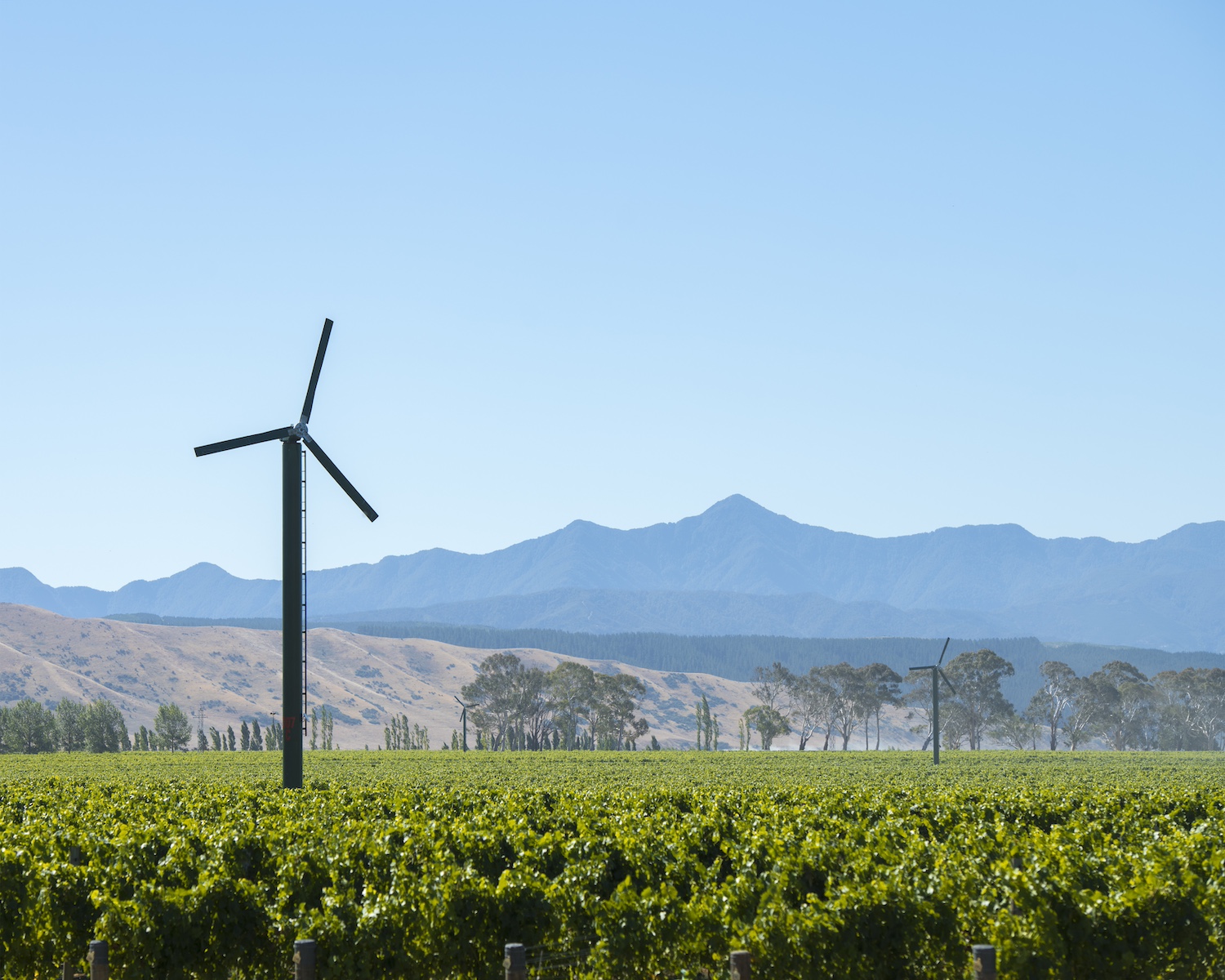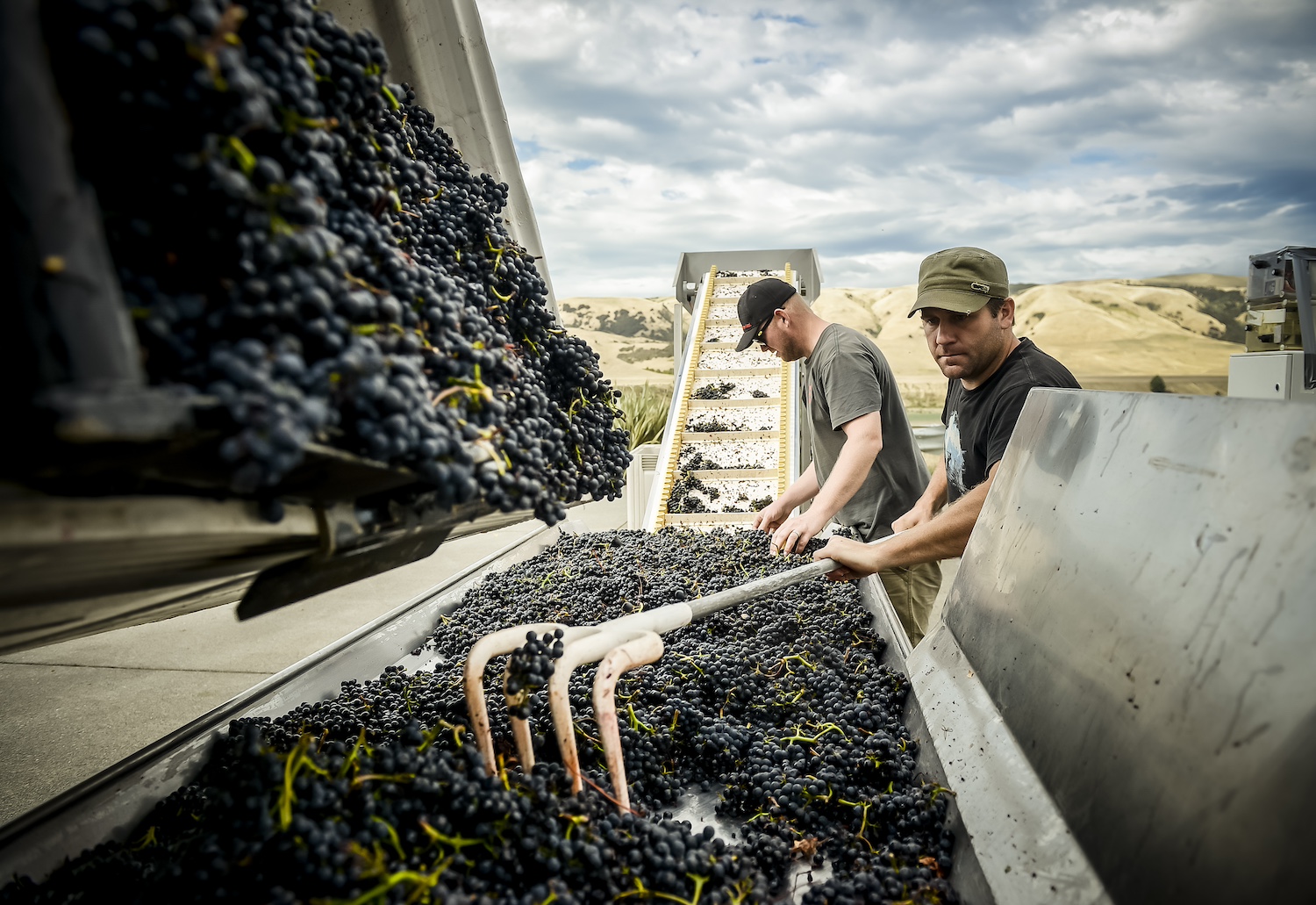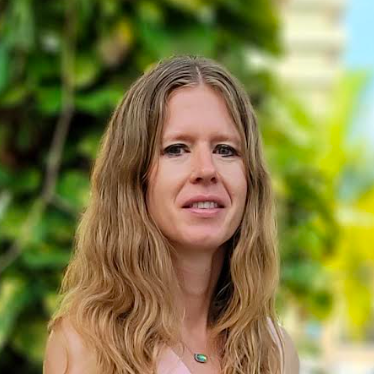
Sheep graze on a vineyard in New Zealand. (Image courtesy of New Zealand Winegrowers Inc.)
Welcome to 3p Happy Hour! As we all eye the exit door on Friday afternoons, we're raising our glasses to the sustainable beer, wine and spirits brands serving up stiff sips with less environmental impact while benefiting communities.
Described as bottled poetry, wine is one of our more elegant creations. Nothing conveys that better than the zesty, vibrant flavor profile of a New Zealand sauvignon blanc. Yet underneath the hints of pineapple and fresh-cut grass lies a sour note. From pesticides to water use, wine leaves behind an environmental footprint. Plus, the industry emits greenhouse gases — researchers estimate up to 3.5 kg of carbon dioxide is emitted per bottle.
To make matters worse, climate change-fueled droughts and heat waves threaten the industry. And with rising global temperatures comes other problems, like disease. One study estimates wineries in Marlborough, New Zealand, could lose up to $100 million per year from increasing fungal infections.
But there’s hope yet at the bottom of the wine bottle. Sustainable Winegrowing New Zealand, a certification program for winemakers and vineyards run by the industry membership organization New Zealand Winegrowers, is focused on improving the industry's impacts on climate change, water, waste, plant protection, soil and people. Its 2025 New Zealand Winegrowers Sustainability Report was just released, highlighting the impressive improvements Kiwis are making, from lightening up on packaging to reducing carbon emissions.
Sustainable wine in New Zealand
First launched in 1995, the certification program was one of the first in the industry, Meagan Littlejohn, program manager of Sustainable Winegrowing New Zealand, said in an email to Triple Pundit. Since then, it’s been widely adopted, with 98 percent of New Zealand’s vineyard area under certification.
“This level of industry-wide participation in a sustainability scheme is a massive point of difference for wine produced in New Zealand,” Littlejohn said. “Sustainable Winegrowing New Zealand certifies all parts of the production chain, including vineyards, wineries and brands.”
To be certified, members have to complete annual submissions and undergo regular on-site audits conducted by an independent verification company, Littlejohn said. Besides its dedication to environmental health, the program also focuses on employees working in the industry. It assesses participants’ health and safety standards, how they attract and retain talent, and how they promote the careers of women and young people in the industry. But the certification’s bread and butter is improving what’s swirling in your glass, which means tackling issues starting in the vineyard.

Pest-free pinots
We all love a fruity pinot noir with notes of chocolate and clove, but there might be something else in there: pesticides. For instance, a study from the University of Chemistry and Technology, Prague, found 25 different pesticide residues in wine, with fungicides and insecticides being the most common. These chemicals ward off diseases, insects, and weeds, but also pollute water, damage soil biodiversity, and harm wine growers, workers and neighbors. Sustainable Winegrowing New Zealand takes pesticide use seriously.
“Vineyard members must also submit a full spray diary annually, which documents all agrichemical applications made to the vineyard that season,” Littlejohn said. “Spray diaries are processed for compliance to ensure that only approved products have been used and specific rules of use set out in the annual spray schedule ‘rule book’ have been adhered to.”
Plus, it keeps a national database of agrichemical use for all vineyards. “Every chemical application on a vineyard is recorded in our system,” Littlejohn said. “This ensures that we have nationwide insight into what grape growers are using and how they are using it. The data is then sent to growers in individualized reports, empowering them to visualize and identify improvement opportunities.”
While only a small percentage of New Zealand wineries are fully organic, the majority of vineyards use non-chemical methods to control pests and diseases. For example, pruning vineyard canopies to open them up creates an unfavorable environment for many fungal diseases thanks to lower humidity, increased airflow and more sunlight. Then, the prunings are used as mulch, which can improve soil quality, minimize water loss and suppress weeds.
Sustainable Winegrowing New Zealand is also working on biosecurity, or preventing the introduction and spread of unwanted pests and diseases in the first place. Biosecurity planning will be a mandatory part of the certification program next growing season.
“Due to our island location, biosecurity planning is a particular strength of the New Zealand wine industry,” Littlejohn said. “By ensuring pests and diseases don’t make it into our vineyards, we reduce the need for chemicals in the first place.”

Waste-free wine
A few other environmental impacts are lurking in wine’s silky depths. Wine production requires a lot of water, another area Sustainable Winegrowing New Zealand is addressing. The majority of New Zealand wineries have practices to reduce water use, including detecting and repairing leaks, recovering and recycling cleaning water and purchasing new equipment for more efficient water use.
“Ninety-eight percent of New Zealand vineyards and wineries measure and record the total water they use,” Littlejohn said. “Using water as efficiently as possible is a priority for our industry, and that’s why we’re proud that a high number of our members are implementing initiatives to conserve water or reduce their water use.”
Wine also produces copious amounts of waste in the form of grape marc, the skins, seeds, pulp and stems left over after pressing grapes. Many wineries compost this waste, spread it back on the vineyards or woodlots, or turn it into feed for livestock. But in some cases, the leaching of this material can pollute water sources.
Grapes of warming
Alongside all of this, there’s the big issue faced by nearly any agricultural product: “Climate change is the most pressing challenge to our industry,” Littlejohn said. “There is strong evidence that New Zealand is becoming warmer, drier and exposed to more frequent extreme weather events.”
Some New Zealand wineries are adapting by planting grape varieties in areas that were previously unsuitable, altering the timing of harvest, or grappling with potentially sweeter wines.
The country’s wine industry aims to reach net-zero carbon emissions by 2050. To that end, all members of Sustainable Winegrowing New Zealand report their greenhouse gas emissions and get a summary of their performance in return. The goal is to spur improvement, and some encouraging signs already exist. For example, 40 percent of New Zealand wineries have adopted initiatives boosting energy efficiency, 15 percent use solar energy, and 30 percent are replacing equipment to reduce energy use, according to the 2025 New Zealand Winegrowers Sustainability Report.
The certification program has also taken a stab at packaging, since most of wine’s carbon footprint comes from the production and transport of glass bottles.
“We have seen an increase in sustainable packaging by our members, with recent data showing 63 percent of wineries are using lightweight glass bottles,” Littlejohn said. “Consumer preferences are driving changes with packaging. Innovations such as bag-in-box and aluminum cans are a growing stock-keeping unit in some New Zealand wine brands’ ranges.”
While a big step in the right direction, even slimmed-down bottles have a higher carbon footprint than other types of packaging.
Green vintages ahead
Despite the relatively small size of New Zealand’s wine industry — only about 1 percent of the world’s total — it has an outsized impact. Wine exports were worth $2.1 billion in 2024, making it the country’s sixth-largest market. Regardless of the looming trade wars, New Zealand wine sales continue to grow in the U.S.
“Our size means that our entire industry has embraced sustainability as a differentiator for our products and a crucial contributor to our reputation,” Littlejohn said. “That’s why we have such high participation in the Sustainable Winegrowing New Zealand program and why our members are so focused on continuous improvement, taking small steps each year to ensure our world and our wine are better for it.”

Ruscena Wiederholt is a science writer based in South Florida with a background in biology and ecology. She regularly writes pieces on climate change, sustainability and the environment. When not glued to her laptop, she likes traveling, dancing and doing anything outdoors.














